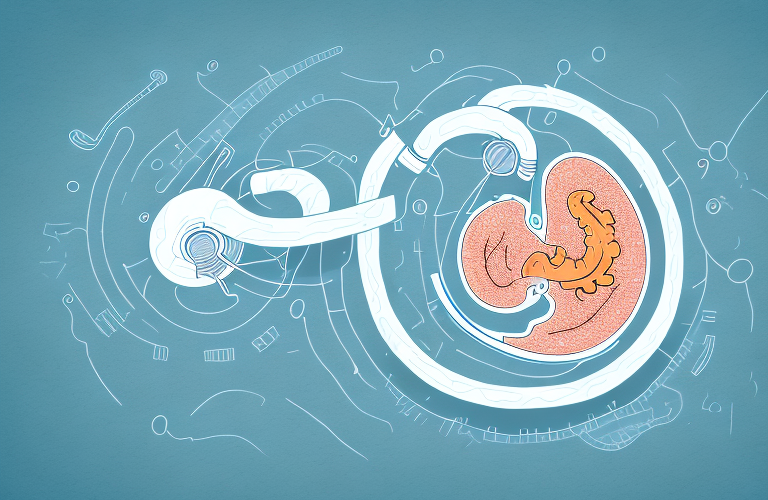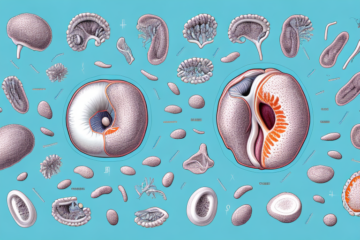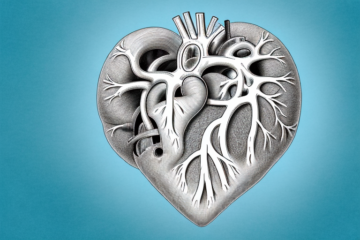Ureteral strictures are a common condition that affects the urinary system. In this article, we will discuss the symptoms, causes, treatment options, and more related to this condition. Ureteral strictures are a narrowing of the ureter, which is the tube that carries urine from the kidneys to the bladder. Read on to learn more about this condition.
What is Ureteral Stricture?
Ureteral stricture is a condition in which the ureter, which is the tube that carries urine from the kidneys to the bladder, narrows. This narrowing can cause a number of symptoms, including pain, discomfort, and difficulty urinating. Some people with ureteral strictures may also experience frequent urinary tract infections.
Ureteral strictures can be caused by a variety of factors, including scar tissue from previous surgeries, radiation therapy, or kidney stones. In some cases, the cause may be unknown. Treatment options for ureteral strictures depend on the severity of the condition and may include medication, surgery, or the use of a stent to keep the ureter open. It is important to seek medical attention if you are experiencing symptoms of a ureteral stricture, as untreated cases can lead to kidney damage or failure.
Understanding the Anatomy of the Ureter
The ureter is a long, thin tube that carries urine from the kidneys to the bladder. It is essential for the proper functioning of the urinary system, as it allows urine to flow freely from the kidneys to the bladder. The ureter is made up of smooth muscle and lined with a mucous membrane that helps to keep the urine moving in the right direction.
The ureter is approximately 10-12 inches long and is divided into three parts: the upper, middle, and lower ureter. The upper ureter is located in the abdomen, the middle ureter passes through the pelvis, and the lower ureter enters the bladder. The ureter also has a unique structure called the ureterovesical junction, which is where the ureter connects to the bladder.
In addition to its role in transporting urine, the ureter also plays a crucial role in preventing urinary tract infections. The ureter has a valve-like mechanism at the ureterovesical junction that prevents urine from flowing back up into the kidneys. This helps to prevent bacteria from entering the kidneys and causing infections. Understanding the anatomy and function of the ureter is important for maintaining proper urinary system health.
How Common is Ureteral Stricture?
Ureteral strictures are relatively common, affecting around 1 in 1,000 people worldwide. They can occur at any age, but are more common in men than women. They are also more common in people who have had urinary tract infections or kidney stones.
Ureteral strictures can also be caused by trauma to the urinary tract, such as from a car accident or a fall. In addition, certain medical conditions such as endometriosis or radiation therapy can increase the risk of developing a ureteral stricture. It is important to seek medical attention if you experience symptoms such as pain or difficulty urinating, as early diagnosis and treatment can prevent complications.
What are the Symptoms of Ureteral Stricture?
The most common symptoms of ureteral stricture include pain or discomfort during urination, frequent urination, and a feeling of urgency to urinate. Other less common symptoms can include blood in the urine, fever, and chills. The severity of the symptoms can vary depending on the degree of narrowing of the ureter.
It is important to note that some people with ureteral stricture may not experience any symptoms at all. This can make it difficult to diagnose the condition, as it may only be discovered during routine medical exams or imaging tests.
If left untreated, ureteral stricture can lead to serious complications such as kidney damage, urinary tract infections, and even sepsis. It is important to seek medical attention if you experience any of the symptoms mentioned above, especially if they persist or worsen over time.
Causes and Risk Factors of Ureteral Stricture
The most common cause of ureteral stricture is scarring from previous surgeries or injuries to the ureter. Other causes can include kidney stones, urinary tract infections, or the use of certain medications. Risk factors for developing ureteral strictures include age, gender, and a history of urinary tract infections or kidney stones.
Another potential cause of ureteral strictures is radiation therapy, which can cause scarring and narrowing of the ureter. In some cases, congenital abnormalities or birth defects can also lead to ureteral strictures.
There are several risk factors that can increase the likelihood of developing ureteral strictures. These include smoking, obesity, and a family history of kidney or urinary tract problems. Additionally, certain medical conditions such as diabetes and high blood pressure can also increase the risk of developing ureteral strictures.
Diagnosing Ureteral Stricture: Tests and Procedures
Diagnosing ureteral stricture typically involves a physical exam, urine tests, and imaging tests such as ultrasound, CT scans, or MRI scans. In some cases, a procedure called cystoscopy may also be used to examine the bladder and urethra.
In addition to these tests and procedures, a urologist may also perform a urodynamic study to evaluate the function of the bladder and urethra. This test involves measuring the pressure and flow of urine during urination, and can help determine if there are any issues with the muscles or nerves that control urination.
Treatment Options for Ureteral Stricture
There are several treatment options for ureteral stricture, including medications, surgical procedures, and lifestyle changes. The most appropriate treatment will depend on the severity of the condition and the individual’s overall health and medical history.
Medications such as alpha-blockers and steroids may be prescribed to help reduce inflammation and improve urine flow. In some cases, a minimally invasive procedure called ureteral stenting may be performed to widen the narrowed area and improve urine flow. Lifestyle changes such as quitting smoking and maintaining a healthy weight can also help improve symptoms and prevent further complications. It is important to discuss all treatment options with a healthcare provider to determine the best course of action for each individual case.
Medications for Treating Ureteral Stricture
Medications such as antibiotics or steroid injections may be used to reduce inflammation and help to open up the ureter. Pain medication may also be prescribed to help manage discomfort.
In addition to medications, other treatments for ureteral stricture may include ureteral stenting or surgery. Ureteral stenting involves placing a small tube in the ureter to help keep it open, while surgery may be necessary for more severe cases of ureteral stricture. It is important to consult with a healthcare provider to determine the best course of treatment for individual cases of ureteral stricture.
Surgical Procedures for Ureteral Stricture
Surgical procedures such as ureteral stenting or balloon dilation may be used to open up the ureter and improve urinary flow. In more severe cases, surgery to remove the damaged section of the ureter may be necessary. This procedure is known as ureteral reimplantation.
Another surgical option for ureteral stricture is laparoscopic ureteral reconstruction. This minimally invasive procedure involves using a laparoscope to access the ureter and reconstruct it using healthy tissue from another part of the body. This technique has been shown to have high success rates and shorter recovery times compared to traditional open surgery.
It is important to note that surgical procedures for ureteral stricture carry some risks, such as bleeding, infection, and damage to surrounding organs. Patients should discuss the potential benefits and risks with their healthcare provider before deciding on a treatment plan.
Lifestyle Changes to Manage Ureteral Stricture
Lifestyle changes such as increasing fluid intake, avoiding caffeine and alcohol, and avoiding foods that can irritate the bladder may also be recommended to help manage ureteral stricture. Quitting smoking and maintaining a healthy weight can also help to reduce the risk of developing this condition.
Another lifestyle change that can be helpful in managing ureteral stricture is regular exercise. Exercise can help to improve overall health and reduce inflammation in the body, which can contribute to the development of ureteral strictures. However, it is important to consult with a healthcare provider before starting any new exercise program.
In addition to lifestyle changes, there are also medical treatments available for ureteral stricture. These may include medications to reduce inflammation, surgery to remove the stricture, or the placement of a stent to keep the ureter open. Your healthcare provider can help determine the best course of treatment for your individual needs.
Complications of Untreated Ureteral Stricture
If left untreated, ureteral strictures can lead to a number of complications, including urinary tract infections, kidney damage, and potentially life-threatening sepsis. It is therefore important to seek prompt medical attention if you experience any symptoms of this condition.
In addition to the aforementioned complications, untreated ureteral strictures can also cause chronic pain and discomfort, as well as difficulty passing urine. This can significantly impact a person’s quality of life and daily activities. Therefore, it is crucial to address this condition as soon as possible to prevent further complications and improve overall well-being.
Preventing Recurrence of Ureteral Stricture
Preventing recurrence of ureteral stricture may involve making lifestyle changes such as quitting smoking and maintaining a healthy weight. Avoiding certain medications and foods that can irritate the bladder may also be recommended. Regular follow-up appointments with a healthcare provider are also important to monitor the condition and prevent recurrence.
In addition to lifestyle changes and regular follow-up appointments, there are also medical treatments that can help prevent recurrence of ureteral stricture. These may include the use of stents or dilation procedures to keep the ureter open, or surgery to remove scar tissue that may be causing the stricture. Your healthcare provider can discuss these options with you and determine the best course of treatment to prevent recurrence.
Alternative Therapies for Managing Ureteral Stricture
There are a number of alternative therapies that may be helpful in managing ureteral stricture, including acupuncture, herbal supplements, and physical therapy. However, it is important to discuss these options with a healthcare provider before trying them.
Acupuncture is a traditional Chinese medicine technique that involves inserting thin needles into specific points on the body. Some studies have suggested that acupuncture may help relieve pain and improve urinary function in patients with ureteral stricture. However, more research is needed to confirm its effectiveness.
Herbal supplements, such as saw palmetto and stinging nettle, have also been used to manage ureteral stricture. These supplements are believed to have anti-inflammatory and diuretic properties that may help reduce inflammation and improve urine flow. However, it is important to note that herbal supplements can interact with other medications and may have side effects, so it is important to consult with a healthcare provider before taking them.
Living with Ureteral Stricture: Coping and Support
Living with ureteral stricture can be challenging, and it is important to seek support from loved ones, healthcare providers, and support groups. Learning about the condition, making lifestyle changes, and following treatment plans can all help to manage symptoms and improve quality of life.
In conclusion, ureteral stricture is a common condition that can cause a number of symptoms and complications if left untreated. Prompt diagnosis and appropriate treatment are essential for managing this condition and preventing recurrence. By making lifestyle changes, following treatment plans, and seeking support, individuals with ureteral stricture can manage their symptoms and enjoy improved quality of life.
One of the lifestyle changes that can be helpful for individuals with ureteral stricture is maintaining a healthy diet. Eating a balanced diet that is rich in fruits, vegetables, and whole grains can help to reduce inflammation and promote healing. Additionally, avoiding foods that are high in salt, sugar, and saturated fats can help to reduce the risk of complications such as high blood pressure and heart disease.
Another important aspect of managing ureteral stricture is staying active. Regular exercise can help to improve circulation, reduce inflammation, and promote overall health and well-being. It is important to talk to a healthcare provider before starting any new exercise program, as some activities may be more appropriate than others depending on the individual’s specific condition and needs.










